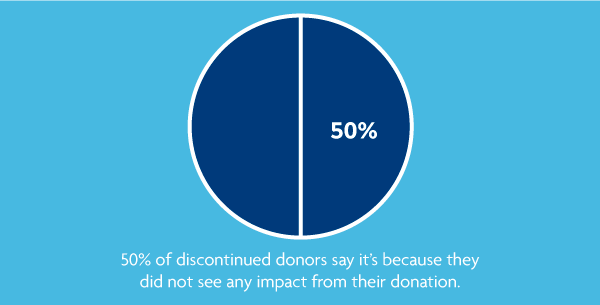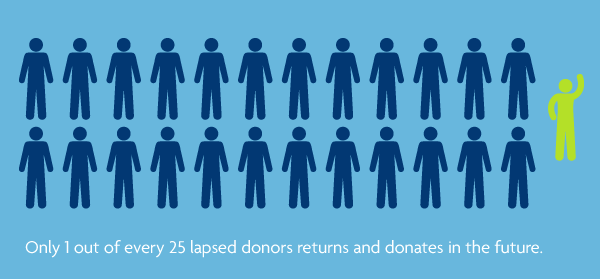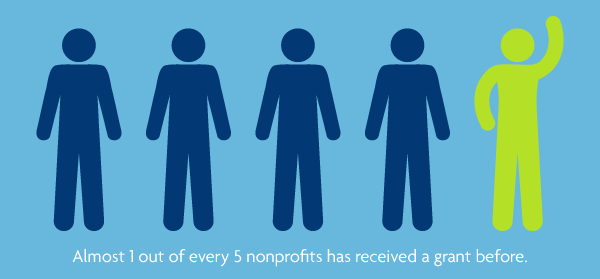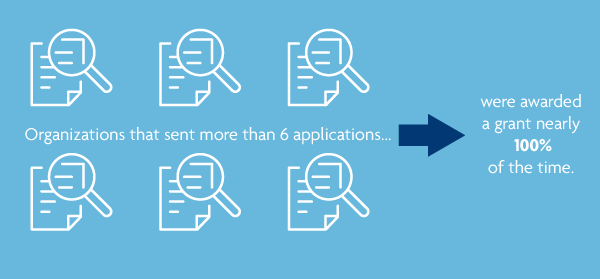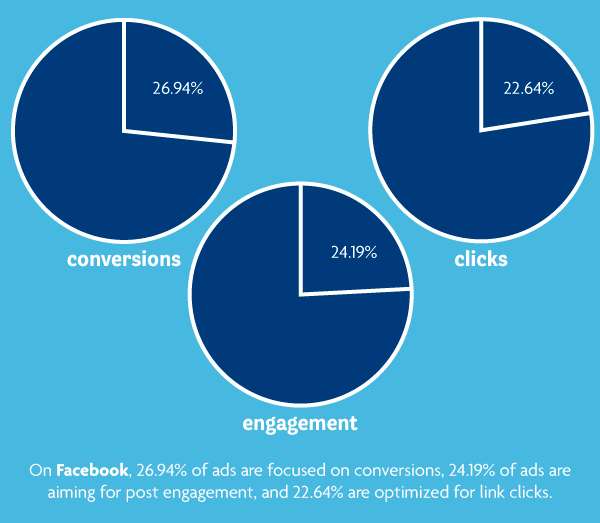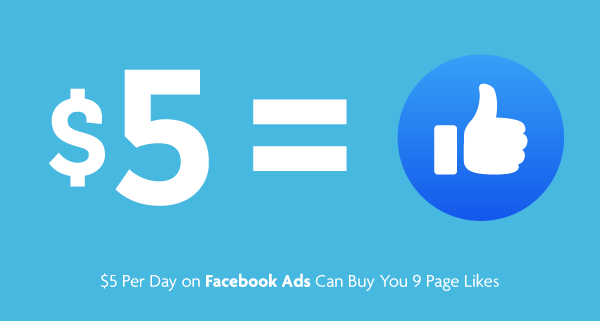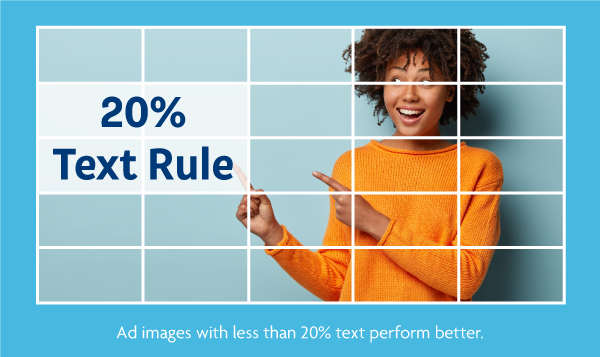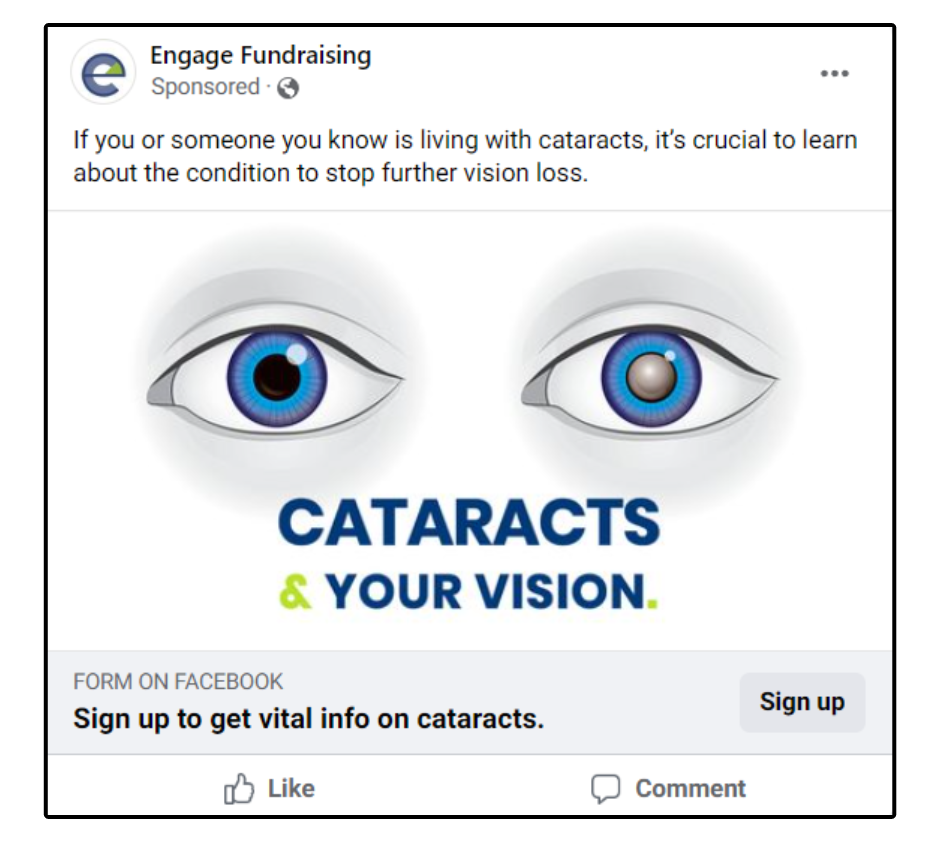The world of fundraising has gone digital. In order to build your community, engage your base, and raise money, your nonprofit needs a developed email marketing strategy.
For many nonprofits, the thought of creating an email marketing campaign from scratch can be overwhelming.
And it’s easy to understand why. With your average supporter receiving dozens of emails in their inbox daily, how do you make your content stand out?
Below you’ll get an inside look at the importance of email marketing. We’ll also provide a list of essential steps to get your campaigns off the ground.
Why Email Marketing is a Necessity for Your Nonprofit
Compared to other digital content, nonprofit fundraising emails provide a unique set of advantages. They’re absolutely crucial to engaging with supporters and, of course, bringing in money.
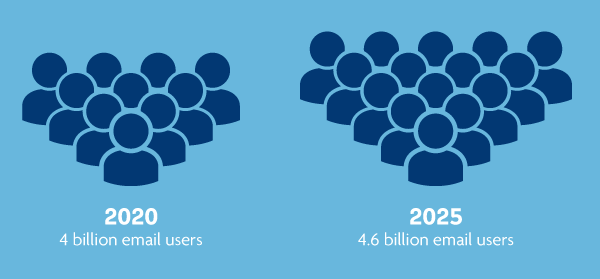
If you’re not tapping into the power of email, you’re missing out!
By adding a stream of emails to your marketing strategy, here are a few ways you’re benefiting.
Great for engagement
Email marketing for nonprofits is one of the best ways to communicate directly with your supporters. Send an email telling your community about upcoming events, causes you’re supporting, or how their support is helping. This creates a dialogue with your donors and builds relationships.
As a nonprofit, it’s vital that you provide value. Supporters are much more likely to engage with your organization when you tell them how you’re making a difference. Nonprofit fundraising emails are a fantastic opportunity to share your mission and values.
Your community will feel good hearing about the work you’re doing, and in addition, you will gain invaluable engagement. And as a result, you’ll be building your database and funds.
Nurtures leads and data
By sending out engaging, interactive content, you will gain an understanding of who your best supporters are.
Is there a group of people who open every email you send out? Or perhaps there’s a handful of donors who make sure to donate every month? Those people are your best chances for conversion.
Collecting data allows you to find the best leads in your donor base and create targeted content for those people.
Low-cost implementation
The biggest reason nonprofit fundraising emails are so prevalent is simple: they’re cost-effective. With countless email service providers on the market, charitable organizations can send out an email for pennies on the dollar. As a matter of fact, on average every $1 spent on email has a return on investment of $36.
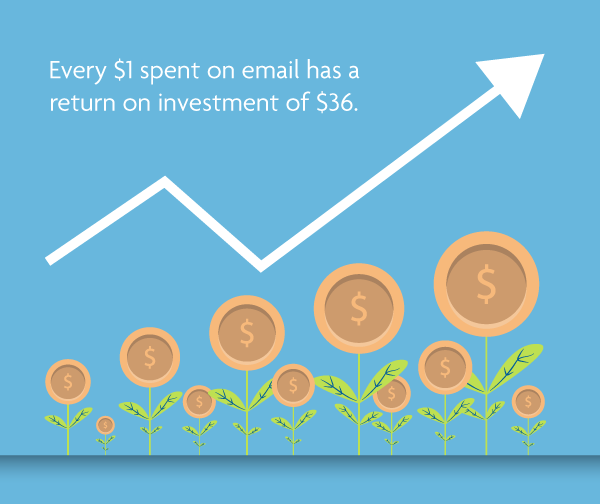
Nonprofits often have to be conscious of every expense. If your organization is on a tight budget, email marketing is the best, low-cost investment you can make.
How to Develop Your Email Marketing Campaigns
We’ve talked about the why, but now you’re probably wondering: how?
Developing an email marketing strategy can seem daunting. But with a few foundational principles and steps, you can have your first campaign up and running in no time.
Begin with a good list of supporters
If you’re just beginning to send nonprofit fundraising emails, you want to test the waters with a small list of dedicated supporters to gauge responses and engagement.
Spamming a huge list with multiple emails daily is a sure-fire to burn through your data and will have people searching for the unsubscribe link.
But crafting a thoughtful, targeted email to those who have supported you in the past is an amazing way to see how engaged your community is and what type of content they prefer.
Go through your available data and identify your strongest supporters who have donated, volunteered, or participated in your past events. Then, create emails that speak directly to those groups of people. For example, thanking them for their past contribution or participation, and offering them another chance to help.
Putting effort into identifying your best supporters and creating mindful, targeted content is the best way to warm up your list and create a positive donor experience.
Analyze your data
Once you’ve collected data regarding your email performance, it’s crucial to analyze and draw conclusions from the numbers.
Do your donors prefer newsletters that keep them up-to-date on your organization’s latest endeavours? Or perhaps they want to hear about the results of your recent fundraising campaign?
Are your open rates higher when you send an email late at night, or early in the day?
Every statistic tells a story regarding your supporters’ behaviour. Therefore, it’s essential that you tap into this wealth of information and develop nonprofit fundraising emails that play into these trends.
You do not want to be wasting your time and resources on a campaign that no one is engaging with.
Take the time to learn about your community and what makes them tick. Once you have that knowledge, then it becomes easier and easier to develop content that speaks to your audience.
Grow your list
In order to have a successful nonprofit fundraising email strategy, you must always build your list of supporters. And while retaining donors is extremely important to an organization’s health, acquiring donors is the only way to grow.
As a result, you must take every opportunity possible to promote your email sign-up. Make the sign-up form on your website is easy to access, encourage people to register for your list at events, and bring attention to your email sign-up on all your digital channels.
Some popular places to create a sign-up form include the footer of your website, a pop-up form, or a dedicated landing page that you can link to.
Your landing page should be simple and easy to navigate. Be sure to include some information regarding what you do and why it’s important, but keep it short and simple. Then, ensure that the process to sign-up is as easy as possible so people don’t lose interest and click away.
Create quality content
While you may think this goes without saying, all too often organizations send out boring, uninspired emails and expect the funds to flow in. As we detailed earlier, it’s vital to provide value to your donors.
You have to take the time to speak to your supporters personally and provide them with useful information and opportunities. Otherwise, it will show in your email results.
Planning out varied, engaging fundraising emails with quality copy and graphics will build up your brand and reputation. And it will also create a meaningful dialogue that fosters donor relationships.
Keep reading to see some tried and tested email content examples.
5 Examples for Your Next Email Marketing Campaign
Stuck on what type of content to create for your email marketing campaigns? We’ve got a list of essential nonprofit email examples to get you started.
Individual stories
If your organization has examples of individuals you’ve helped in the past, share their stories.
Donors want to know that their support is making a difference. Sharing stories of those who have benefited from your nonprofit are concrete examples of the impact they’re making.
Reach out to some people who may be willing to share their story. Next, interview them to hear more about their personal journey and how your organization has helped them.
This type of content allows your community to have a real human connection and feel the impact of their support.
Newsletters
Newsletters are a great way to keep your supporters updated with your mission and share upcoming events or initiatives.
Again, you want to make sure these emails are donor-centric, letting them know how they’re making a difference.
Newsletter emails can include a wide variety of content, which is what makes them so versatile. Try including campaign updates, upcoming events or volunteer opportunities, educational news or studies, and resources for supporters to get involved.
Calls to action
If your nonprofit has a big emphasis on advocacy, be sure to reach out to your supporters for help.
Encourage your community to sign petitions, start peer-to-peer campaigns, or even create advocacy content. This is a fantastic way to empower supporters and get them involved with your organization.
Make it as easy as possible to join your advocacy efforts, and provide resources to help them along the way.
Fundraising emails
Nonprofit fundraising emails are an integral part of email marketing. They allow you to raise funds quickly and directly for a specific cause or occasion.
Because these emails are singularly focused on donations, you need a clear reason for asking for money. Whether you’re fundraising for a research project, collecting donations following a disaster, or asking for gifts during a holiday campaign—make sure your reason is compelling.
Include examples of how generous donations helped during previous campaigns and what kind of impact their donation would make today.
Thank you
Above all, donors want to feel appreciated. Making sure they know how much they are valued is paramount to donor retention.
Taking the time to say thanks to your community goes a long way in creating a positive donor experience. You can even target these emails to deliver a personalized message of thanks regarding the specific cause a donor supported.
Expressing your appreciation to your donors is absolutely essential if you want to maintain and nurture long-lasting relationships.
Here is an excellent example of a sincere thank you message from one of our clients:
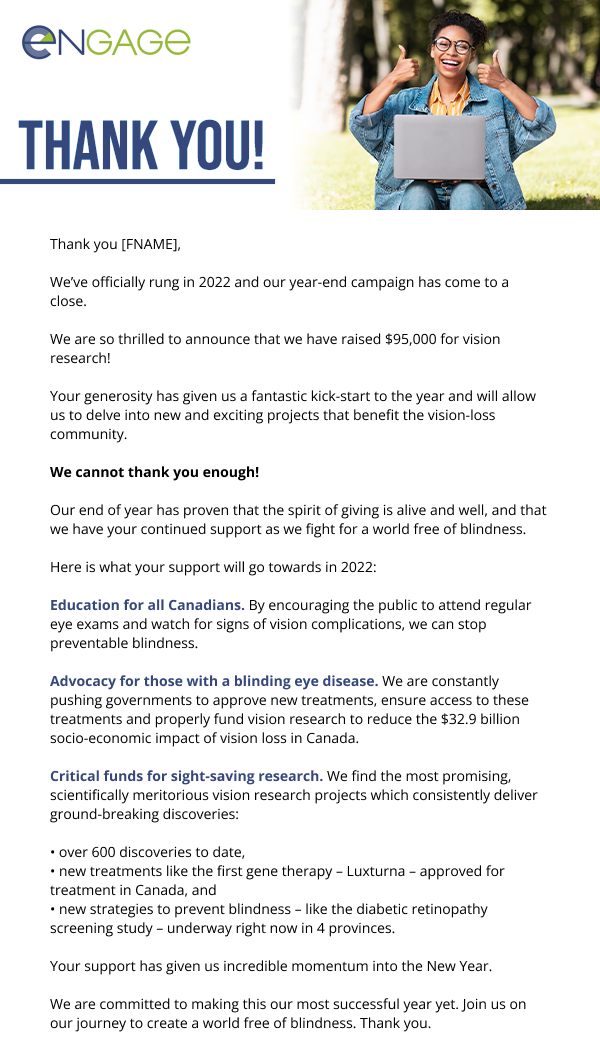
Need Help Email Marketing for Nonprofits?
We realize that nonprofits are busy making the world a better place. If your organization could use some help creating a meaningful and effective email market strategy, we’re here to help.
Engage Fundraising is a leading fundraising agency dedicated to working with charitable and nonprofit organizations. We help our clients run successful direct marketing campaigns, donor relationship building and retention, and donor conversion.
We want you to leave the marketing to us so you can continue changing the world. Learn more about us by speaking with a specialist.
